Şanlıurfa is a city as fascinating as she is enchanting. Boasting an astonishing history reaching back to the very beginnings of human civilization, over the millennia, countless people have left their mark on this gorgeous Kurdish town. Whether you want to journey back to the outset of faith, dive deeper into her multi-faceted past, or simply enjoy her charming beauty, Şanlıurfa is sure to mesmerise.
In the day’s fleeting hours, the world turns golden.
Like silken cloth, radiant light sweeps across the landscape and flows down into a verdant valley of ochre facades and lush vegetation, one last brilliant display, before vanishing beyond distant hilltops. Flights of pigeons swirl around slender minarets and swaying palm trees; a little girl clad in a bloodred dress whirls around an open square with youthful energy, careless and free, a beautiful homage to the soaring birds above. People saunter along shaded paths or embrace the gentle caress of the waning light dancing across their faces, while the call of the muezzin journeys across this fading land, over level rooftops and jutting chimneys, and echos from the imposing ramparts of an ancient citadel.
In awe, I behold the wondrous spectacle.
Guilty of ignorance, I had been completely oblivious to the beauty of this extraordinary city.
Her convenient location (halfway between Gaziantep and Mardin) and a couple of promising images on Google had me convinced to come, however, and after wandering her labyrinthian ways and delving deeper into her riveting foretime, reaching back to the very beginnings of human civilization, I had deeply fallen in love with this utterly charming Turkish town.
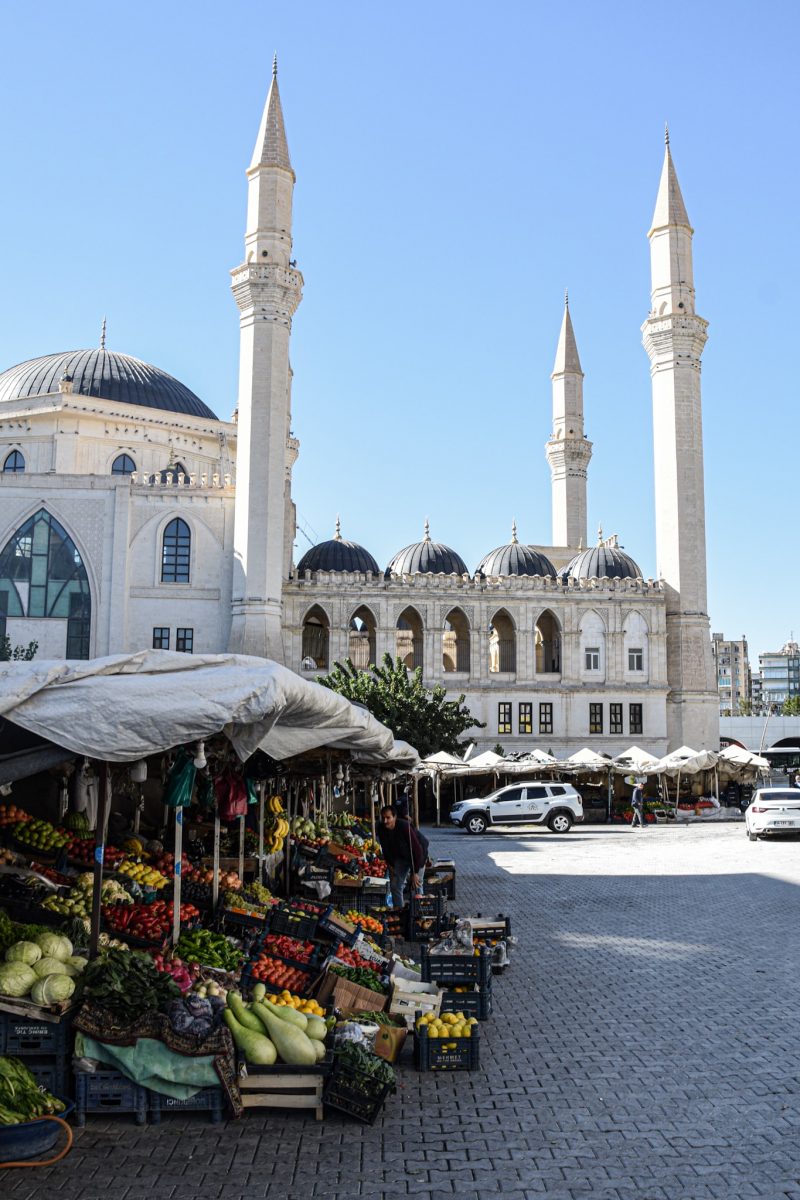
WHAT TO DO IN ŞANLIURFA
MARVEL AT ŞANLIURFA’S NEOLITHIC RICHNESS
HUNT WITH AMAZON QUEENS AT THE MOSAIC MUSEUM
EXPLORE THE ROMAN NECROPOLIS OF KIZILKOYUN
VISIT ABRAHAM’S BIRTHPLACE AND MEVLID-I HALIL MOSQUE
UNWIND AT BALIKLIGÖL AND AYN ZELIHA LAKE
TRAVEL TO THE OUTSET OF FAITH IN GÖBEKLI TEPE
A BRIEF HISTORY OF ŞANLIURFA
First founded in 303 BCE as Edessa (named after the ancient Macedonian capital) by Seleucus I Nicator on the remnants of a Neolithic settlement, the city quickly replaced Harran as the main commercial hub in northern Mesopotamia.
Following the disintegration of the Seleucid Empire in the 2nd century BCE, Edessa became the thriving capital of the Osroene Kingdom. For the next three hundred years, her rulers semi-successfully juggled their loyalty between the Persian Parthian Empire and Rome, before finally falling to the Roman legions in 214 CE.
When West-Rome had already collapsed under the pressure of Barbarian hordes, Edessa experienced her most prosperous period. Ruled by a cosmopolitan patrician class, long-distance trade flourished once more, and the city established herself as a theological centre of the Roman east, before the Arab conquests of the 7th century brought a swift end to Roman dominance. Edessa remained under Muslim control until the 11th century when European crusaders flooded the land and founded the County of Edessa, the first crusader state in the Levante. Their success was short-lived, however, and the promised land soon fell to the Turkish Seljuks in 1144, terminating Christian ambitions in the region once and for all.
In 1637, after further Mongolian and Mamlukan invasions, Urfa was finally integrated into the expanding Ottoman realm at a time the city was an important hub in the cotton, leather, and jewel trade. Despite her turbulent past, one of Şanlıurfa’s most tragic episodes only came at the end of the 19th/beginning of the 20th century, however, when she became one of the main settings of the Armenian genocide, where thousands perished in progroms and death marches into the Syrian desert.
In the wake of World War I, Urfa was first occupied by British, then French forces, before Turkish nationalists regained control, claiming her for the nascent Turkish republic.

MARVEL AT ŞANLIURFA'S NEOLITHIC RICHNESS
A few thousand years ago, something remarkable happened in the vast reaches of Mesopotamia.
After aeons of strife, man forsook his nomadic ways and settled down. Permanent dwellings started to appear along the lush banks of the Euphrates and Tigris rivers, cultivation of wild crops reshaped the landscape, and animal husbandry replaced the wild hunt. Societies diversified, faiths formed, and new technologies emerged. A fundamental shift had occurred in the history of humankind: the Neolithic Revolution, birth of the first civilizations.
From her cradle in Mesopotamia the revolution spread, and soon numerous settlements graced the hills and plains of the Fertile Crescent, a region roughly encompassing present-day Iraq, south-eastern Turkey, and the countries of the Levante (some definitions also include northern Egypt and Cyprus).
The lands around Şanlıurfa were no exception. Countless habitations and astonishing remnants of the Neolithic period have been unearthed over the years and are now being displayed in the Şanlıurfa Archaeological Museum. Covering the regions fascinating past from its humble beginnings of sedentism all the way to the Islamic conquest, the exhibition is a riveting journey through the ages, accompanied by the most impressive collection of pre-historic items I have ever seen.
Some of the highlights include the “Urfa Man”, the oldest life-size statue in the world, a replica of Göbekli Tepe (the oldest religious site in the world), as well as innumerable other spectacular relics from the very early days of human civilization.
Opening hours | Summer (Apr-Oct) 8:00-19:00 | Winter (Nov-Mar) 8:30-17:00 | every day
Entrance fee | 50 TL (October 2022) |Audio guide 30 TL
The combined ticket grants access to the Haleplibahçe Mosaic Museum, as well.


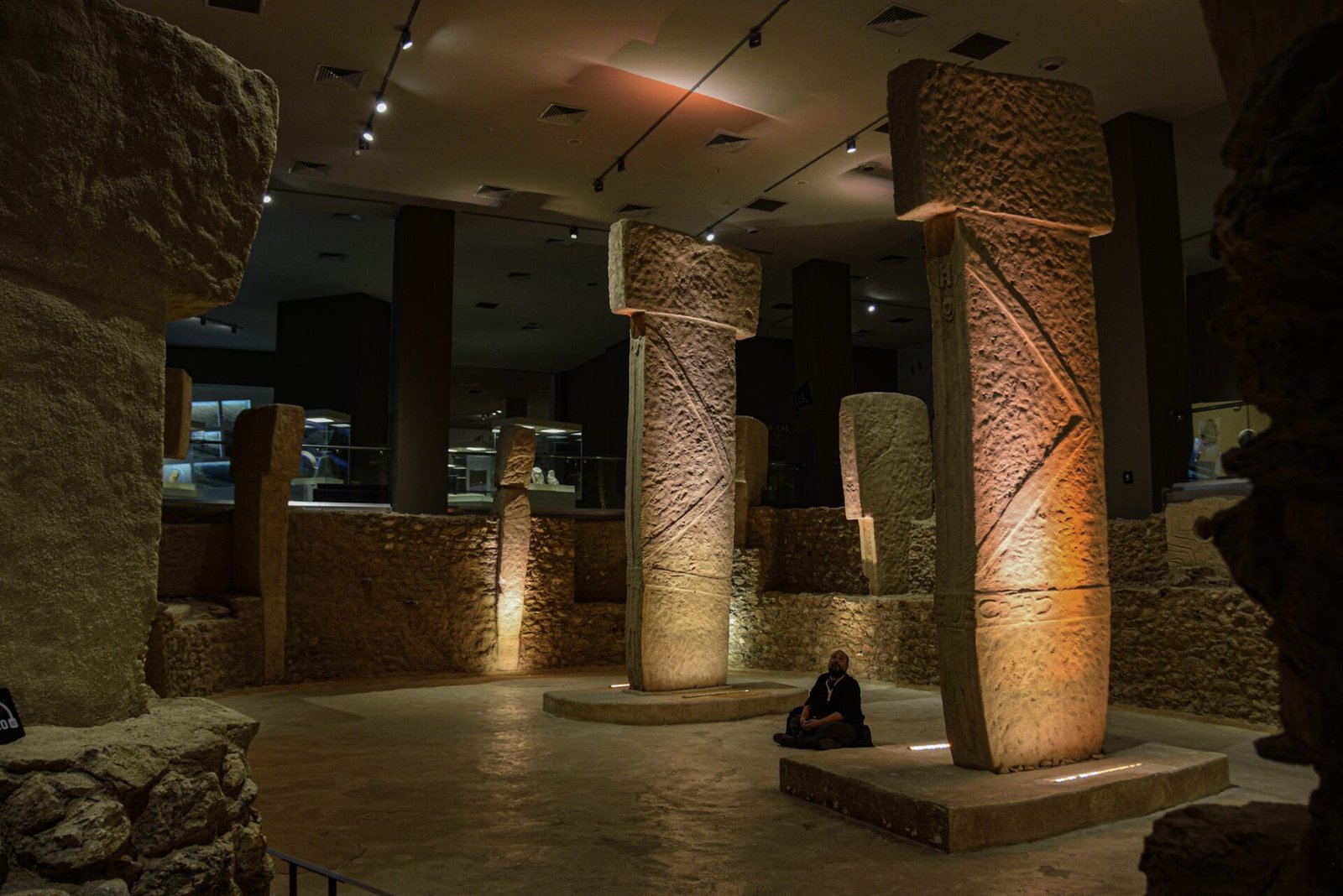
HUNT WITH AMAZON QUEENS AT THE MOSAIC MUSEUM
When in 2006, construction workers dug up a parking lot in Haleplibahçe as part of the district’s “Urban Renewal Project”, few would have predicted the astonishing discovery they unearthed.
Concealed beneath the ground laid the foundations of several Roman buildings from the 3rd and 4th century CE, their floors embellished with impeccable mosaic art. To preserve these extraordinary findings, an emergency excavation was conducted and a museum erected on the site.
Among the displayed mosaics are a depiction of Achilles’ life before the Trojan War, a colourful portrait of Ktisis (personification of foundation of cities), an image of Orpheus playing the lyra for an audience of wild animals, and a hunting scene featuring the four Amazon queens Hippolite, Thermodosa, Melanippe, and Penthesileia, the only mosaic known in the world to show these famed female warriors.
Opening hours | Summer (Apr-Oct) 8:00-19:00 | Winter (Nov-Mar) 8:30-17:00 | every day
Entrance fee | 50 TL (October 2022) |Audio guide 30 TL
The combined ticket also grants access to the Archaeological Museum.



EXPLORE THE ROMAN NECROPOLIS OF KIZILKOYUN
Just across the street from the mosaic museum, dozens of man-made caves perforate the rocky slopes of Tılfındır Hill. Hewn deep into the limestone bedrock, the hollows appear quite unremarkable but tell one of Şanlıurfa’s most intriguing chapters.
Constructed between the 2nd and 4th century CE, the site was in fact the final resting place of the city’s patrician class. Each cave belonged to a distinct family and usually consisted of a single chamber protected by two stone doors (one square-shaped, the other circular) and a pair of guardian statues. The interior featured five alcoves for the sarcophaguses, framed by columns and other masonry, a separate grave in the middle of the room (to make space for newly deceased family members), and at times even floor mosaics.
Once buried the dead were not forgotten, however. Funerary cults were an integral part of Roman life and veneration of the deceased happened on multiple occasions throughout the year, traditionally in the form of lavish feasts. Affluent families even paid for “professional mourners”, mostly young women, who would wheep perpetually at the tomb. Astonishingly, this rather bizarre profession seems to have survived in parts of Italy.
During Ottoman times, the caves vanished under a jumble of shanties and were used as dwellings, stables, and storage, significantly damaging the ancient burial site.
Only in 2012, the site was declared a “protected cultural area” and the houses were removed to preserve the Kızılkoyun necropolis. So far, 103 unique tombs have been excavated, and some of the unearthed artifacts are now displayed in the city’s Archaeological Museum.

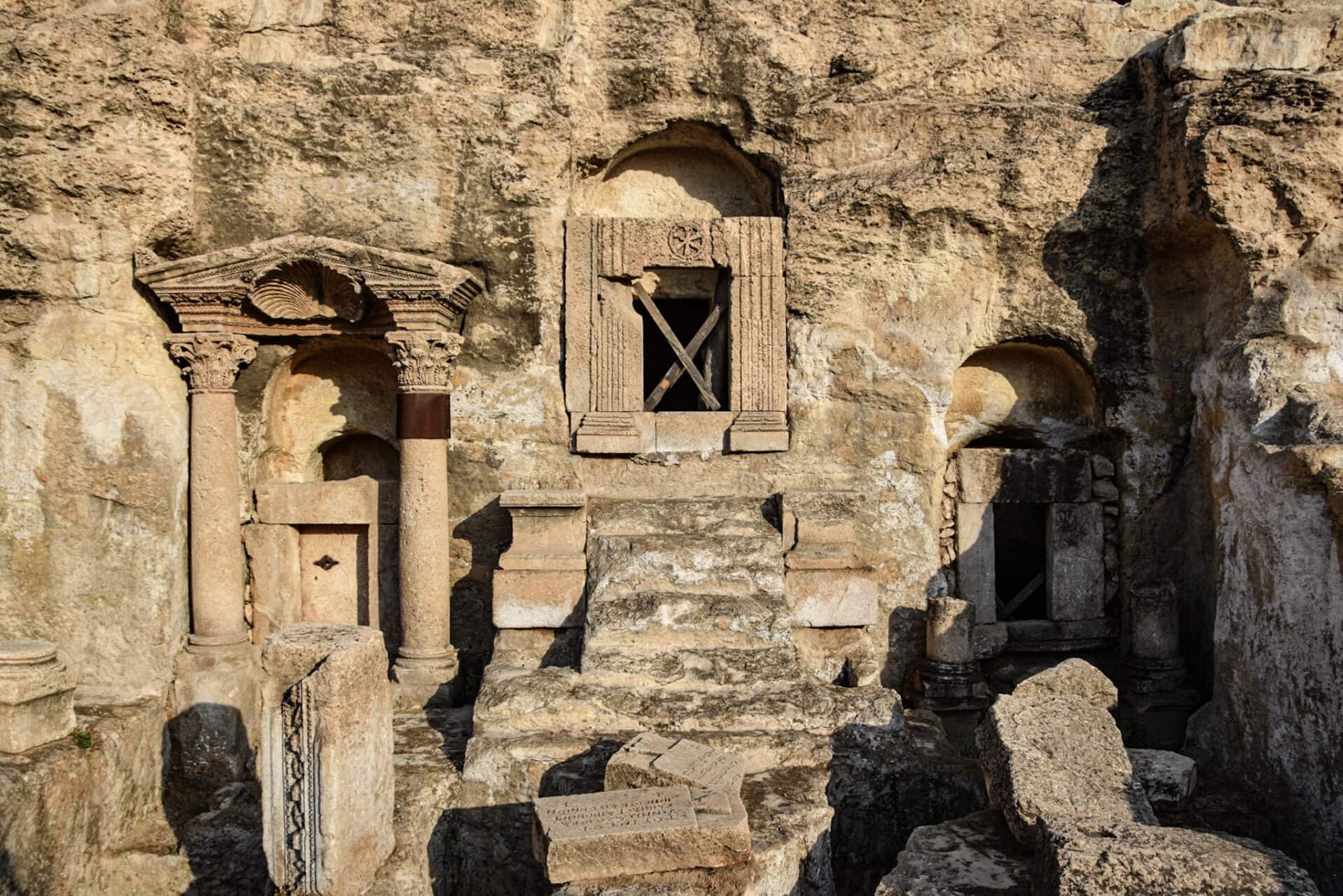
VISIT ABRAHAM'S BIRTHPLACE AND MEVLID-I HALIL MOSQUE
The soothsayer brought sinister news.
Within a few months a child was to be born, destined to slay the sovereign and destroy his religion. To escape his foretold doom, King Nimrud declared all new-borns to be killed for a whole year, and soon thereafter, the blood of the innocent started to sully the land.
Word of the heinous scheme reached the ears of Nuna, a local woman who happened to be pregnant at the time. Fearing for the life of her unborn child, she sought refuge in a nearby cave, and there in the dark, concealed from Nimrud’s preying eyes, she gave birth to Abraham, mystical progenitor of the three Abrahamitic religions (Judaism, Islam, and Christendom).
To avoid detection, the infant remained in the cave unattended and Nuna only returned once a day to suckle it (so did a gazelle sent by Allah, according to legend). After fifteen years in hiding, Abraham was finally found by some of the king’s men and brought to Nimrud’s halls where he henceforth lived undetected under the patronage of the king (story to be continued).
Today, the mythical place of his birth has become a place of worship. Located in a beautiful side yard of the stunning Mevlid-i Halil Mosque (mevlid = “birth of the prophet”), visitors can enter the cave through a small doorway. You will also find a tiny mosque adjacent, which once also housed a pagan temple, a Jewish synagogue, and a Christian church.
Don’t expect too much though. The cave holds symbolic significance rather than visual value, however, the magnificent Mevlid-I Halil Mosque, richly ornamented with gorgeous tilework and surrounded by shimmering marble courtyards, is an absolute feast for the eyes!

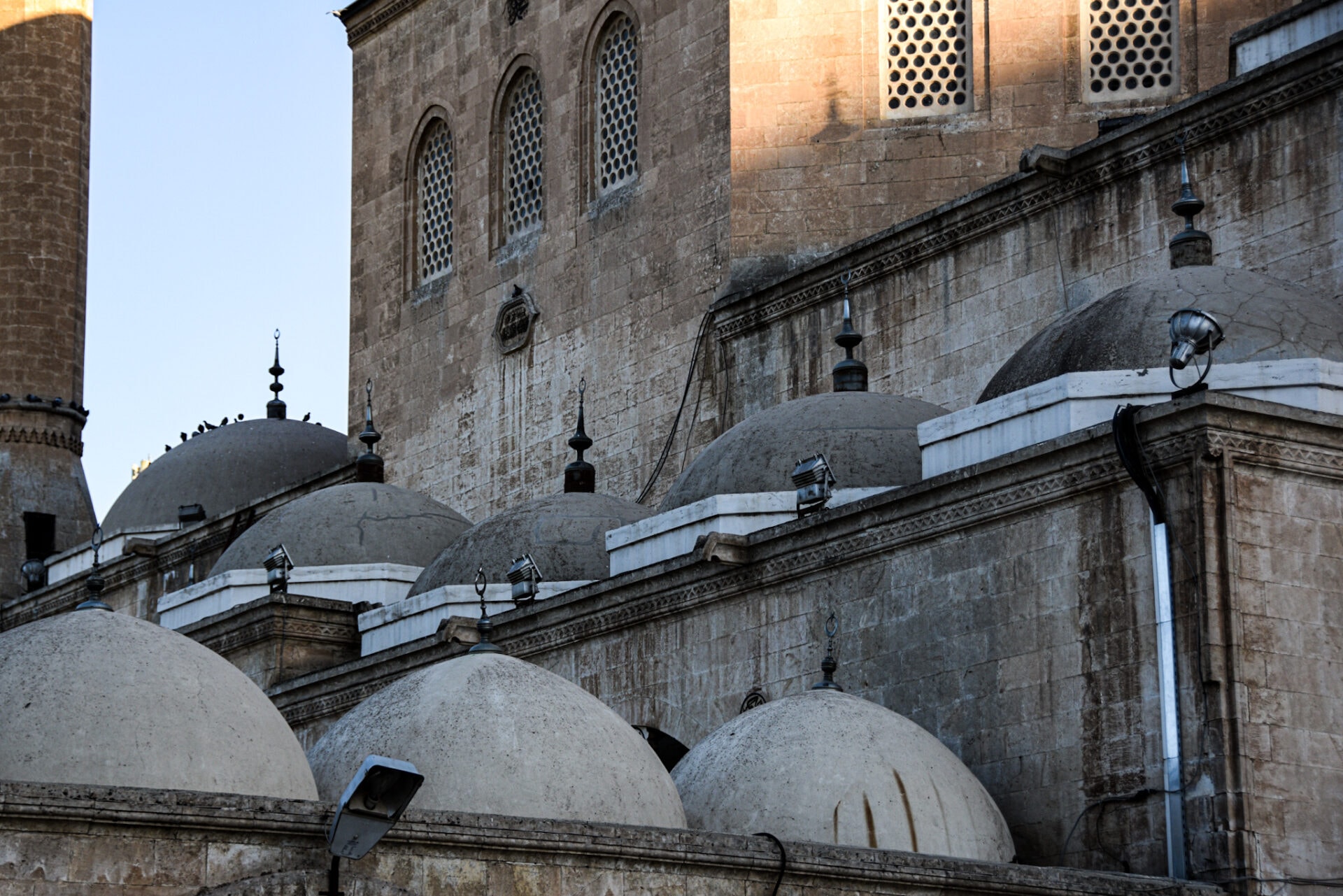

UNWIND AT BALIKLIGÖL AND AYN ZELIHA LAKE
Abraham’s story didn’t end with his move to the royal palace.
Confronted with Nimrud’s polytheistic believes, one night Abraham went on a rampage and destroyed every single idol he could find. Enraged by Abraham’s wicked deed, the king sentenced him to a gruesome death. Tied to a pair of poles, Abraham was catapulted from the ramparts of the citadel and cast into a raging inferno.
However, God intervened. Fire turned into water, burning splinters into fish, and Abraham’s life was saved. Henceforth, Balıklıgöl, also known as “Pool of Abraham” and its residents became sacred and Şanlıurfa’s greatest attraction (feeding the fish is said to bring good fortune).
Merely a short walk away from the lake lies a second gorgeous pool. Tied to Abraham’s tale, legend has it that Zeliha, daughter of King Nimrud, had deeply fallen in love with Abraham. As he was thrown into the heat, Zeliha plunged herself into a different fire pit. Once more, God defied the laws of physics and a second lake appeared: Ayn Zeliha, the Eye of Zeliha.
Today, both lakes (as well as Mevlid-i Halil Mosque) are located in Ayn Zeliha Park, a lush oasis of meandering water channels, shaded pathways, and charming cafés, inviting the weary to halt and unwind in the most enchanting of sceneries.

Enthroned on a rocky outcrop, towering above Urfa’s old town, not much is known about the city’s impressive citadel. Most likely built on the remnants of a Neolithic settlement during the times of the Osroene Kingdom, the castle already reached its current form under the Abbasid dynasty in 814 CE and remained virtually unchanged for the next twelve centuries, before it was transformed into an open-air museum.
Besides its formidable fortifications most of the buildings have vanished, and there is in fact not a lot to see within the castle walls, the most prominent feature being two giant Roman columns from the 3rd century CE (locals think these are the poles mentioned in the legend of the prophet Abraham).
A hike up to the castle is still worthwhile, however, as it offers stunning panoramic views (especially at sunset) of Şanlıurfa sprawling out below.
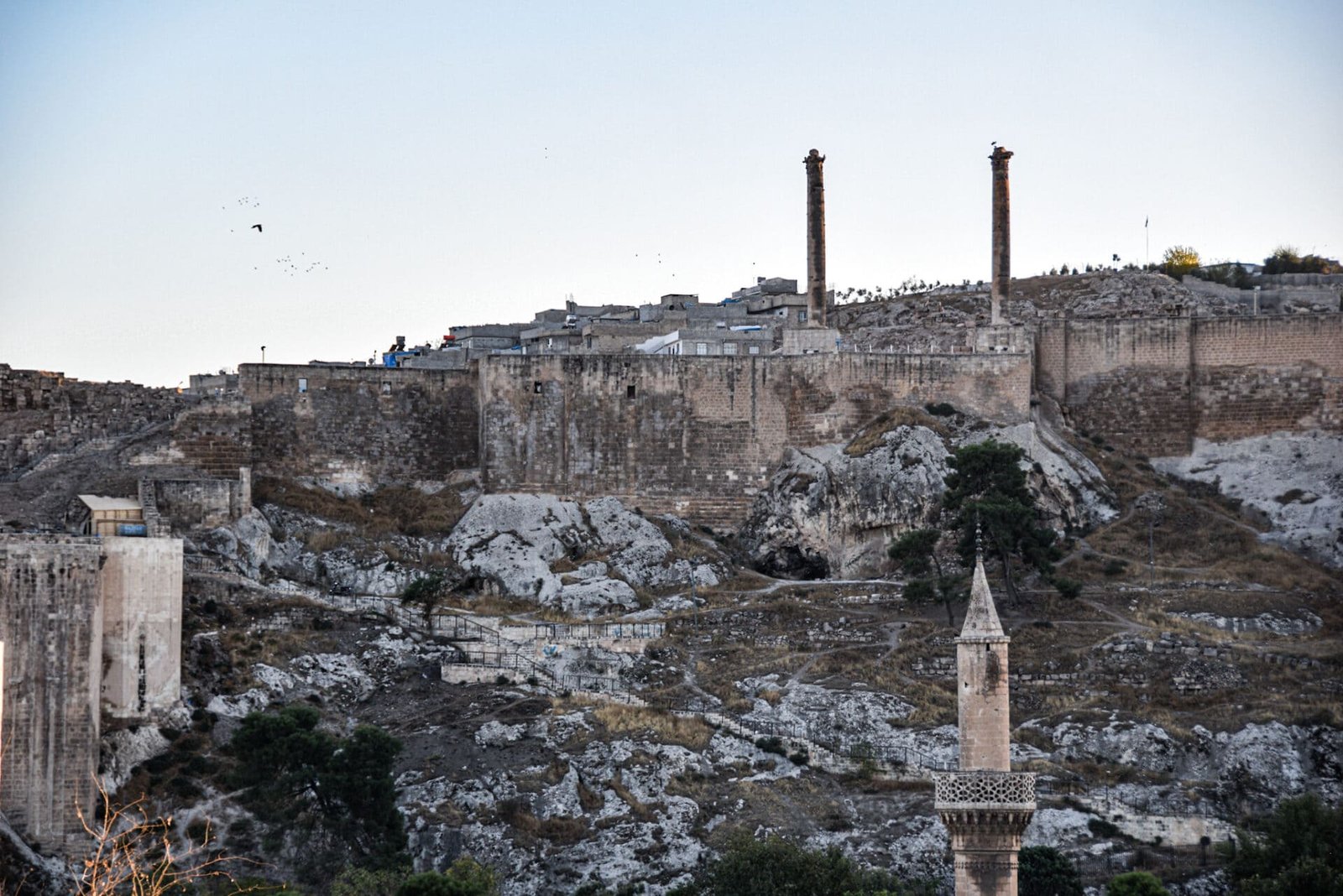
TRAVEL TO THE OUTSET OF FAITH IN GÖBEKLI TEPE
East of Şanlıurfa lies one of history’s most remarkable discoveries: Göbekli Tepe.
Initial excavations were already conducted in 1963, however, it wasn’t until 1994 that the true significance of the pre-historic complex came to light. Even though the mound was abound with various artefacts of the Neolithic Age, one crucial item was missing: pottery, indicating that the site was much older than first presumed.
Archaeologists dug deeper and struck gold. Beneath the arid soil laid the ruins of several monolithic buildings featuring multiple t-shaped limestone pillars richly ornamented with mesmerising imagery of wild animals and human figures. Following further research, Göbekli Tepe was dated to the 10th millennium BCE!
Just to put this into context, Göbekli Tepe is believed to be three times as old as the Pyramids of Giza! It is absolutely mental.
By pure chance, the scientists had unearthed the remains of the oldest, currently known, religious site in the world. A few years into the future, and Göbekli Tepe, potentially religion’s ground zero, has rightfully become one of Şanlıurfa’s main tourist attractions.
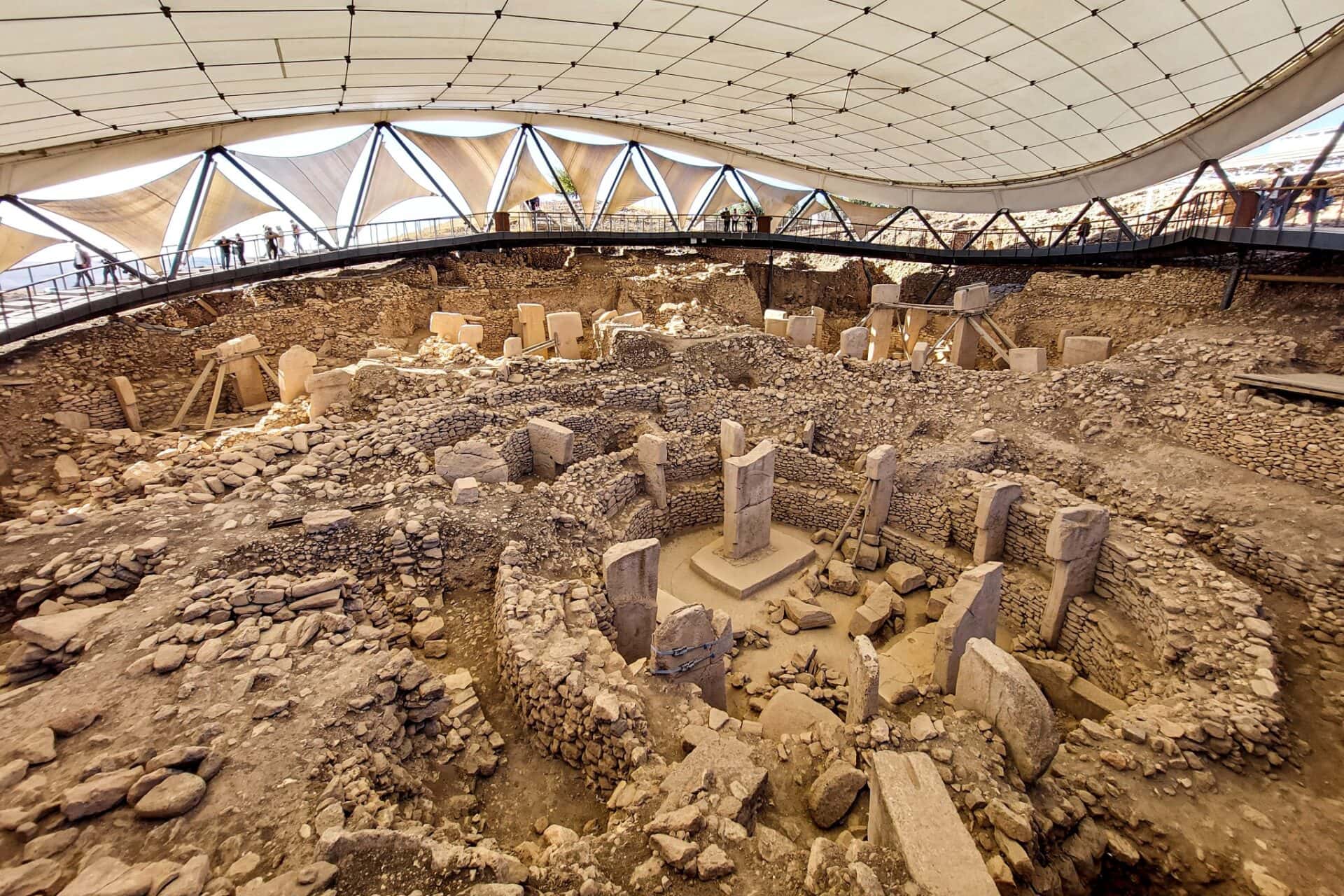
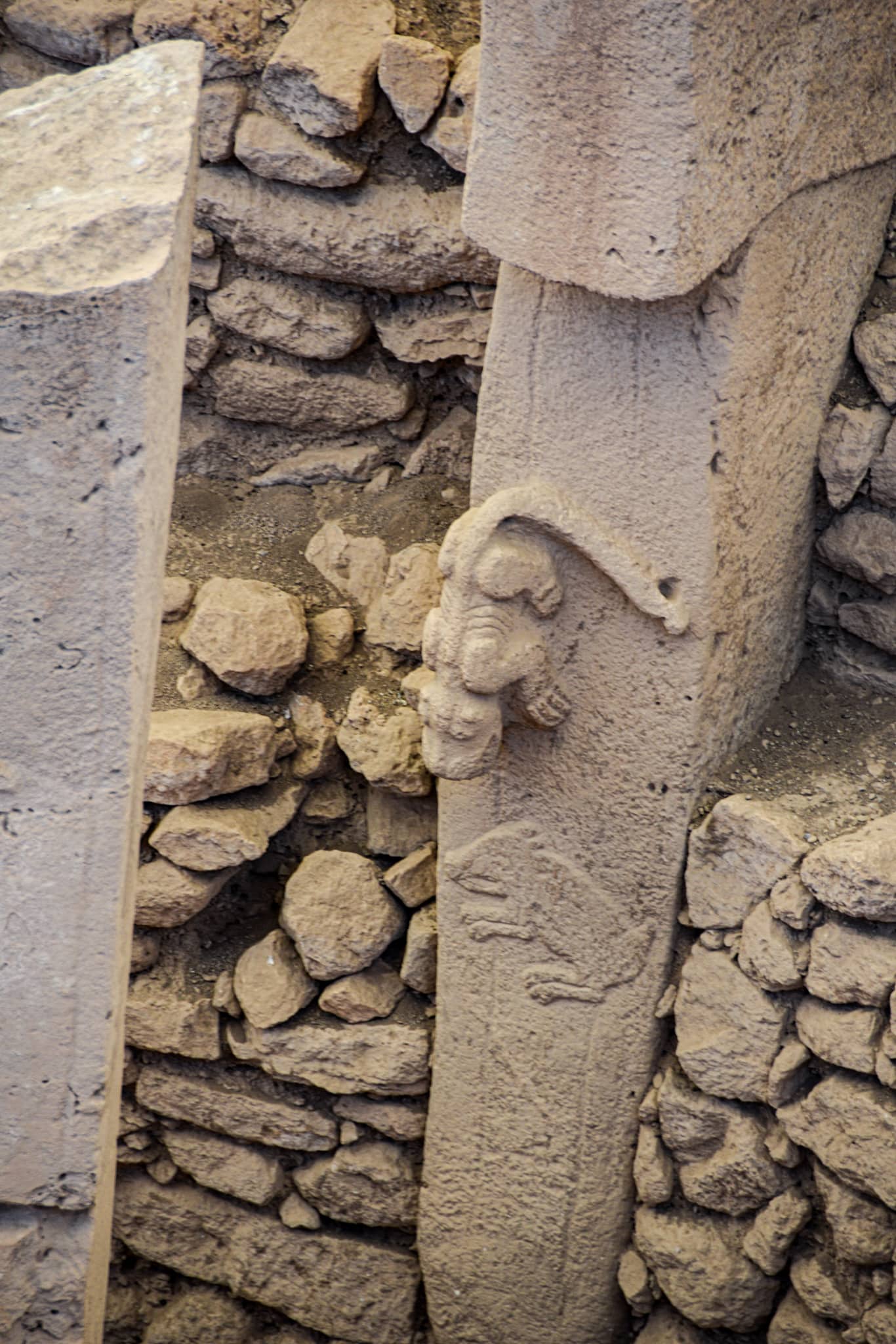
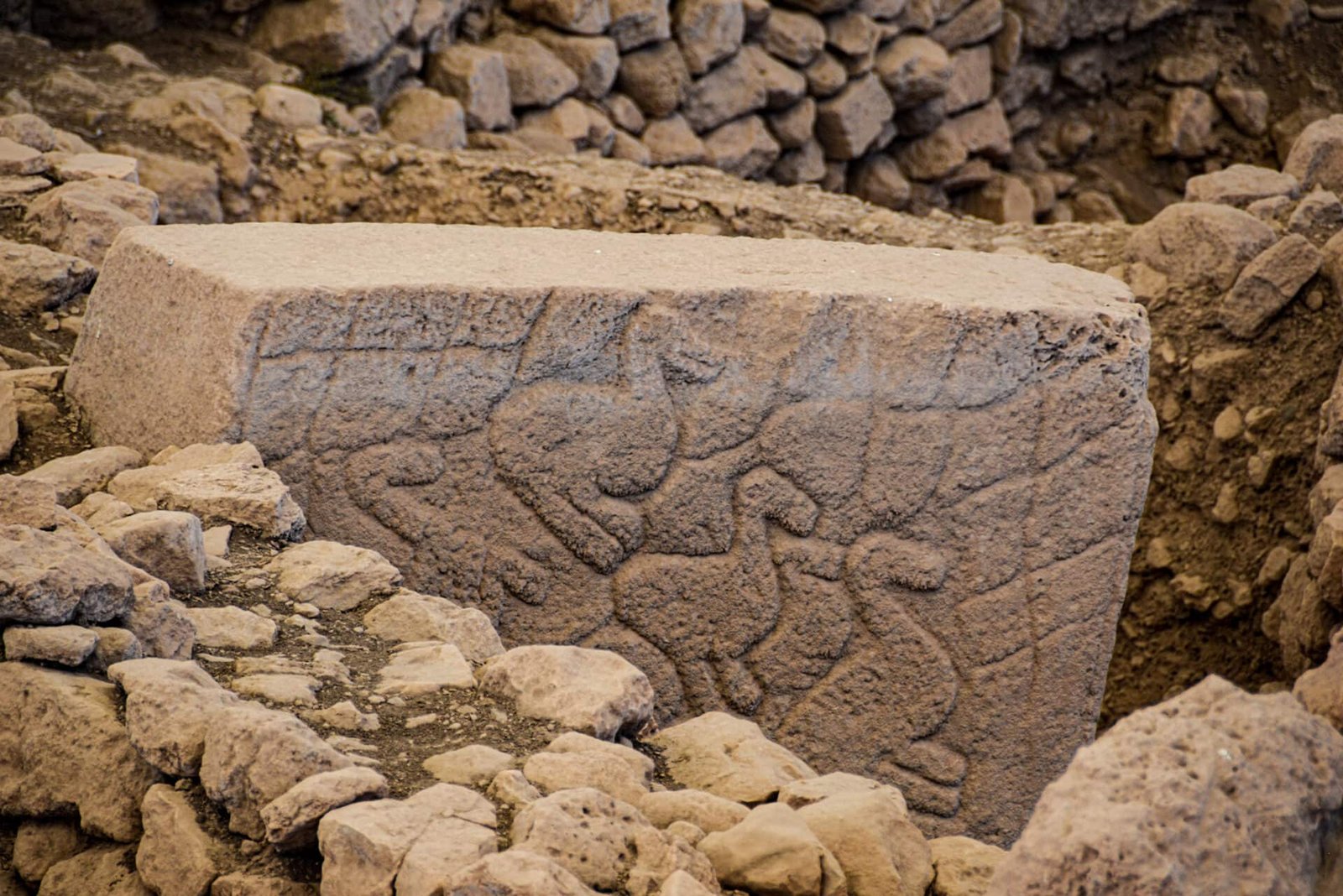
TAKE A DAYTRIP TO HARRAN, THE "BEEHIVE VILLAGE"
The village of Harran is a rather peculiar place.
First settled in the 3rd millennium BCE, the city changed hands numerous times throughout her turbulent history (Akkadians, Assyrians, Babylonians, Hittites, Persians, Macedonians, and Romans all resided in Harran at one point or the other), before falling to the Umayyads during the Arab conquests of the 7th century CE.
Under the auspices of the caliphs, Harran entered an era of unprecedented prosperity. The sciences flourished (especially astronomy and alchemy) and the world’s oldest university opened her gates to the inquisitive. In 745 CE, the last of the Umayyads even moved his court from Damascus to Harran. Ultimately, Harran’s demise came unexpected and swift at the hands of the ravaging Mongol hordes who plundered her riches and razed her to the ground, a fate she never recovered from.
Deprived of her former glory, today, few remains of the ancient metropolis and the village is now mainly known for her striking beehive houses, as well as a unique blend of Islam and shamanism still practiced in the area.
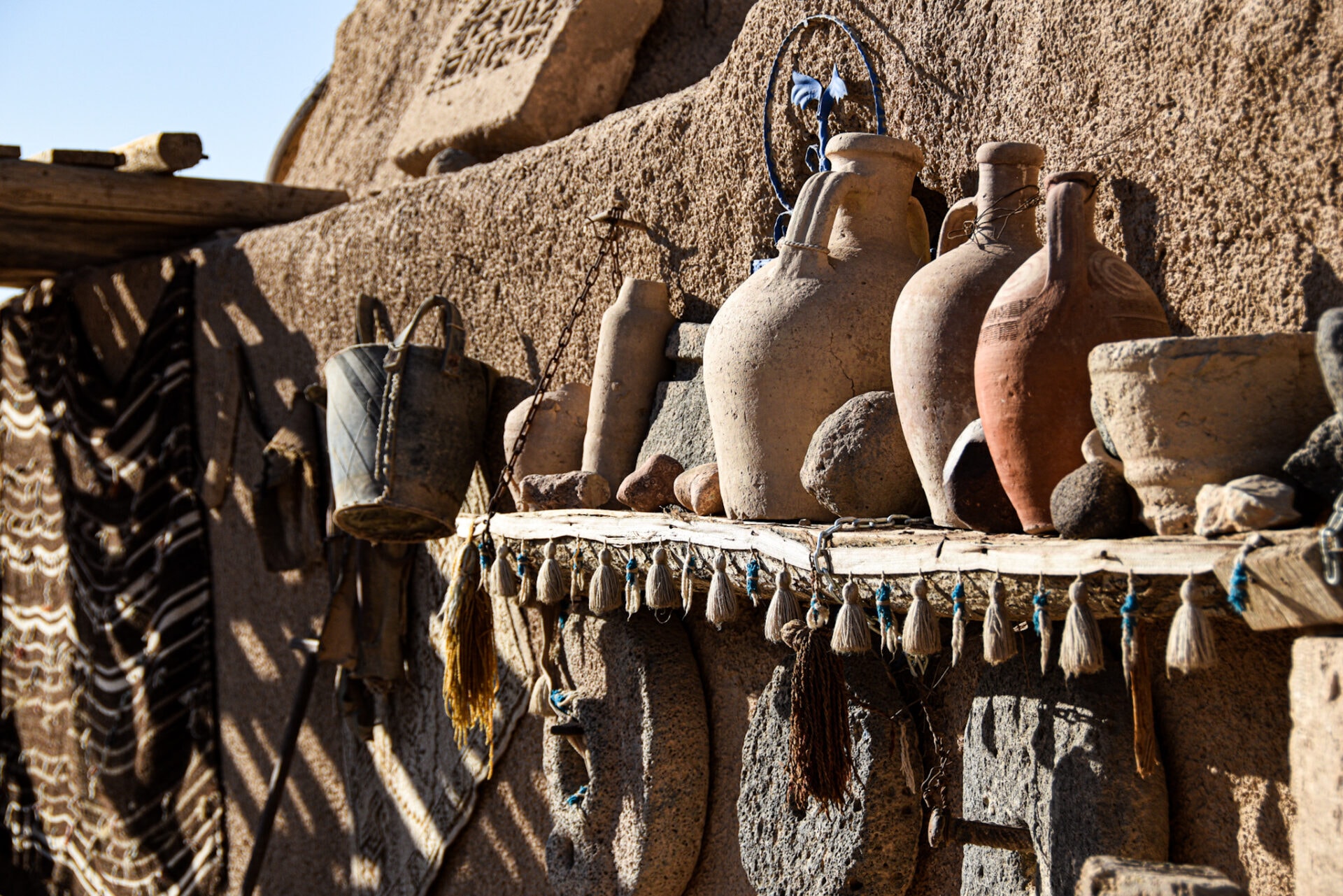

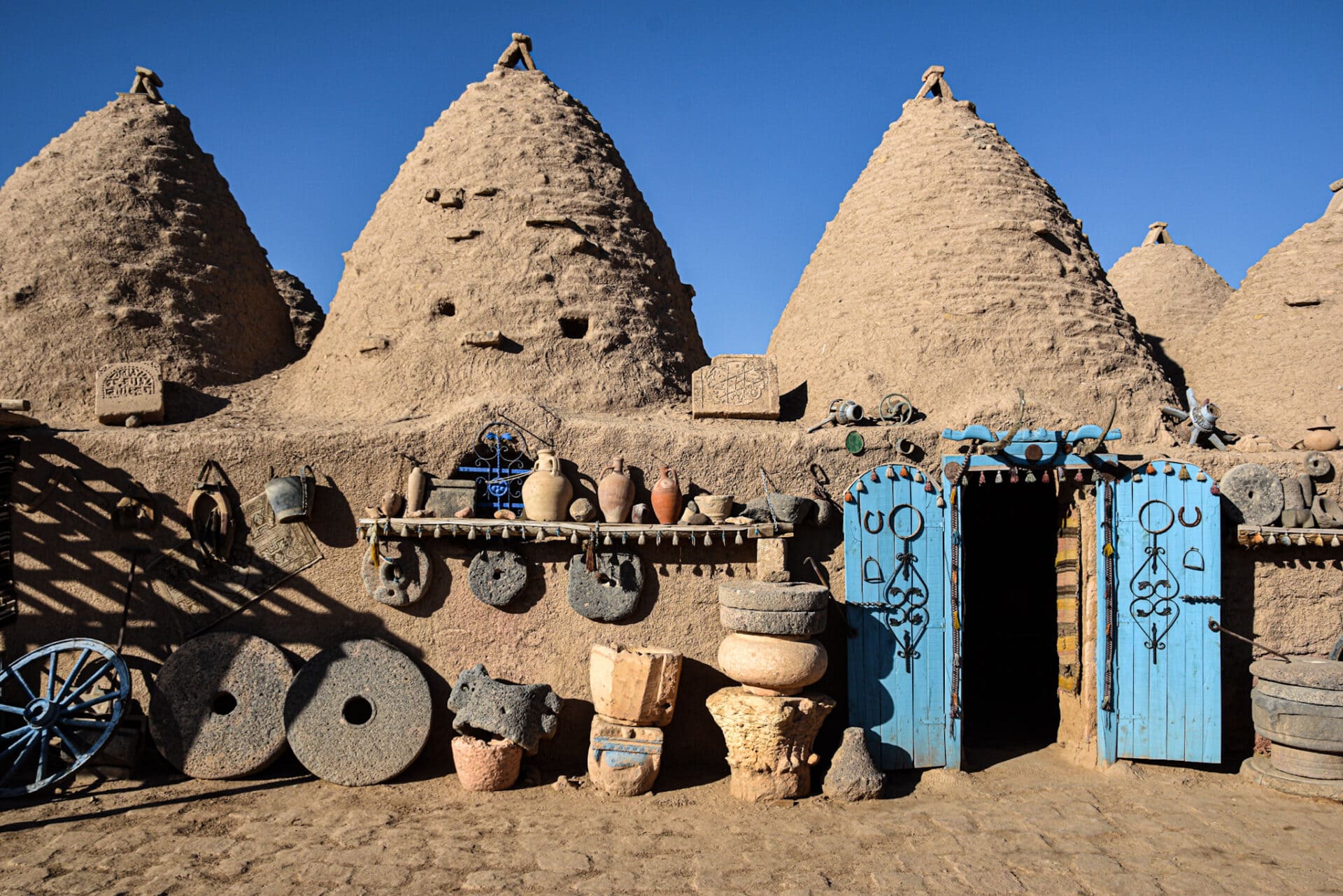
SAUNTER THROUGH THE OLD TOWN
The charm of Şanlıurfa’s old town lies in her unassuming simplicity.
A hidden window framed by Oriental carvings. The wooden wheels of a horse cart rumbling across the cobbled streets. A small corner shop adding specks of colour to the palette. The beautiful façade of an old dwelling, its weathered gate a portal to the unknown. Two elder men garbed in traditional robes absorbed in conversation.
It also lies in the many wonderful places awaiting discovery.
Delicate minarets rising above electric wires and rooftop terraces. Small courtyards spending relief from the otherwise narrow layout of the alleys. An old Assyrian church, once used as a tobacco factory, even later as a grape store. A dusty football ground framed by ochre buildings.
Exploring Şanlıurfa’s old town is not about grand palaces and luxurious abodes. Rather it is about being attentive of the little details, the inconspicuous nooks and crannies, the honest scenes of everyday life, only revealed through aimless wander.
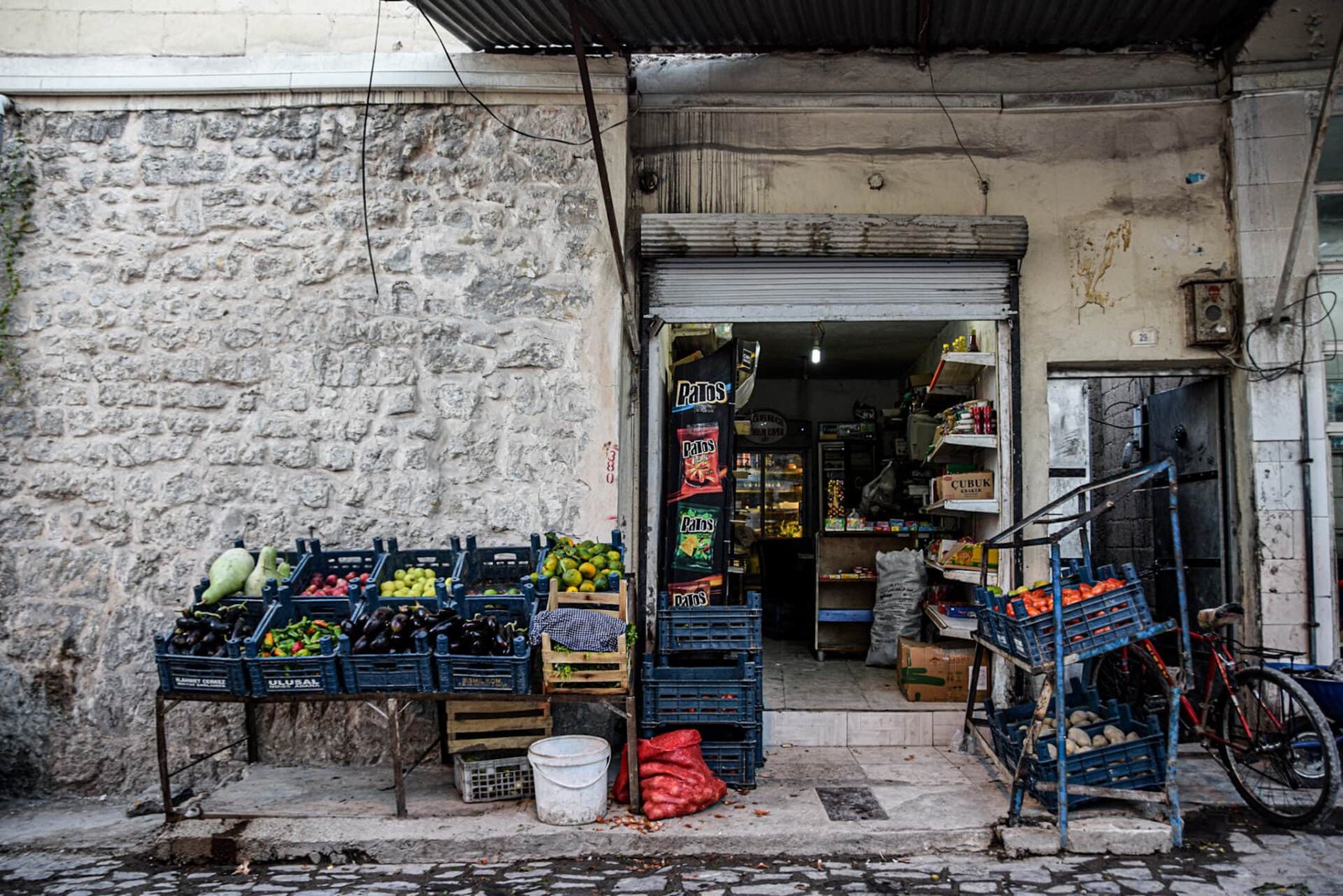
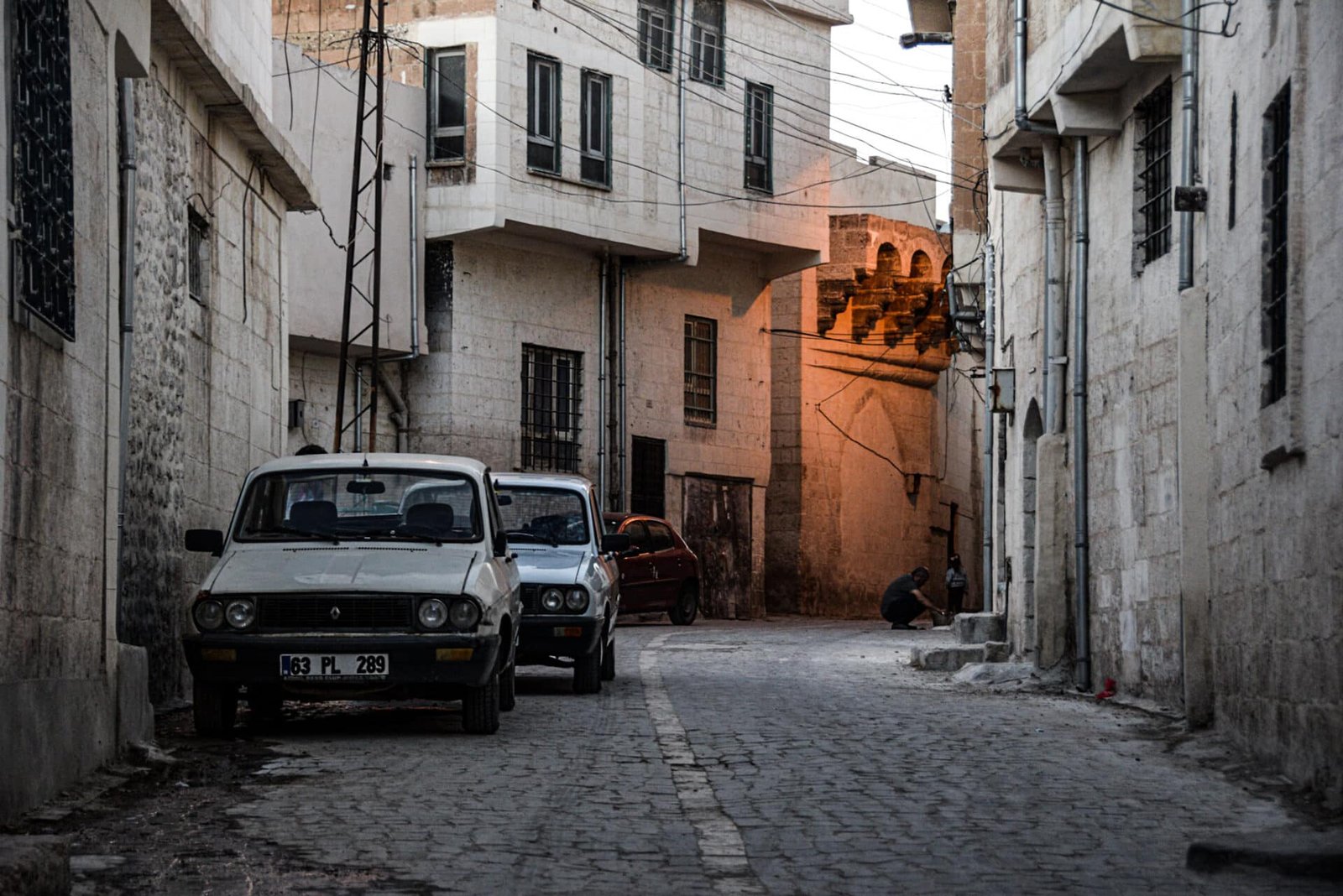
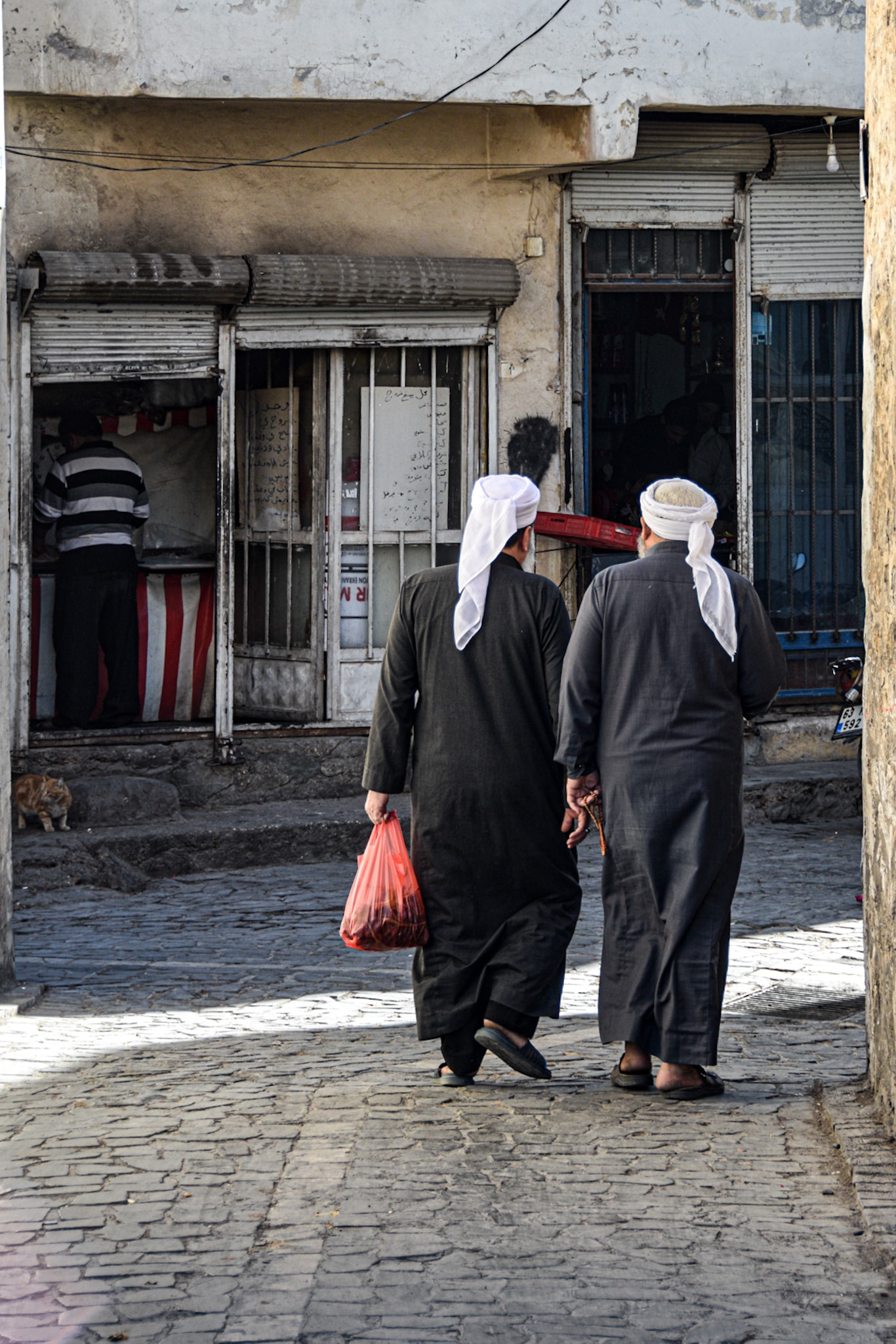


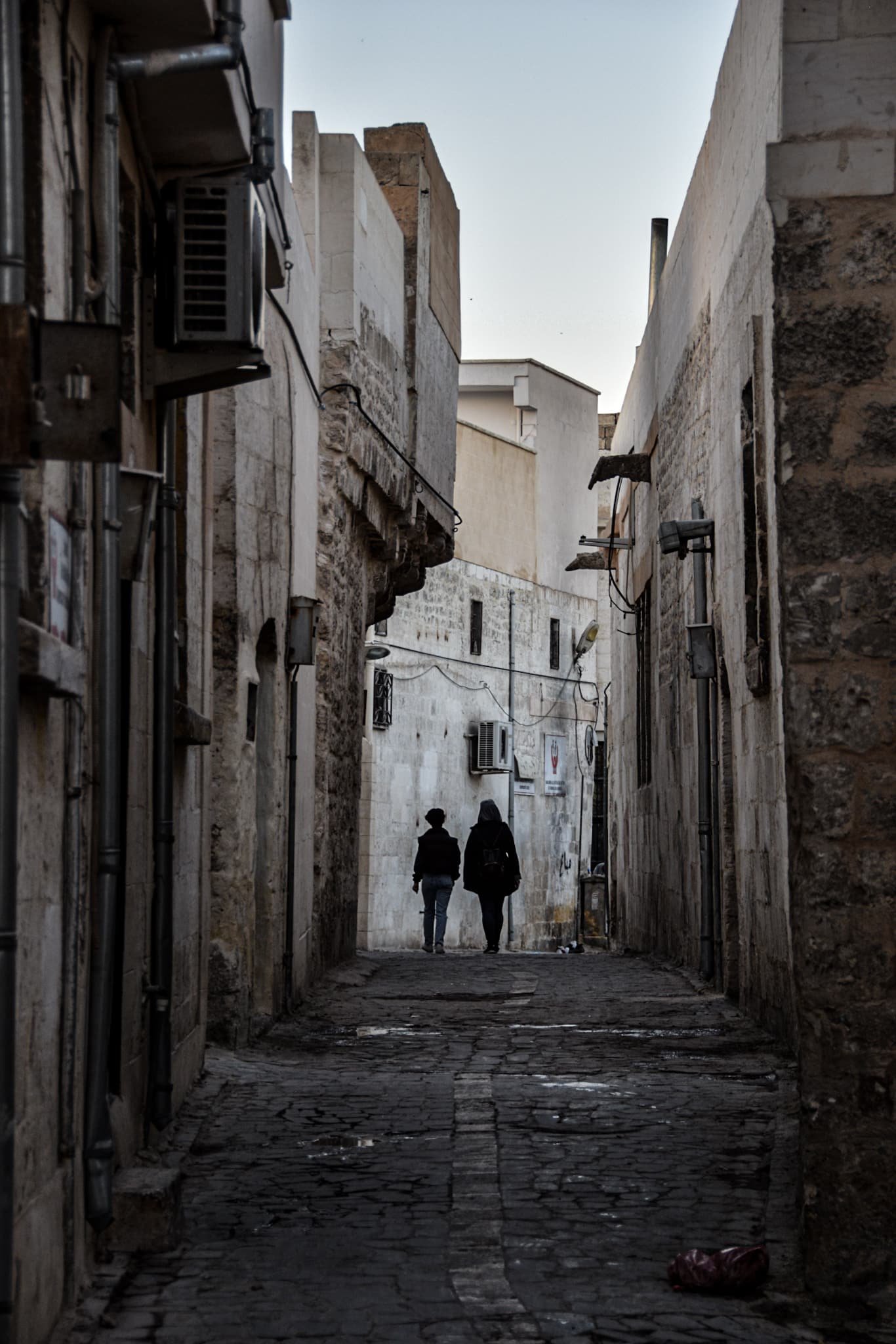
MINGLE WITH THE MERCHANTS
In the pleasant shade of hanging awnings, Şanlıurfa’s heart beats the loudest.
Ever since her inception more than 2000 years ago, commerce has been the city’s lifeblood, the ultimate driving force behind her success and the prosperity of her hardworking population. With the advent of sea routes, she might have lost her global importance, but the legacy of her mercantile ways has endured.
Today, her bustling bazaars and shaded hans remain one of the definite highlights of any visit to this wonderful Kurdish town. Whether you are on the hunt for exotic delicacies, beautiful local crafts, or jewellery you could never afford back home, you are bound to find it in this dizzying maze where few seems to have changed since the days of wayfaring caravans.
So, what are you waiting for? Throw yourself in there and mingle with the merchants!
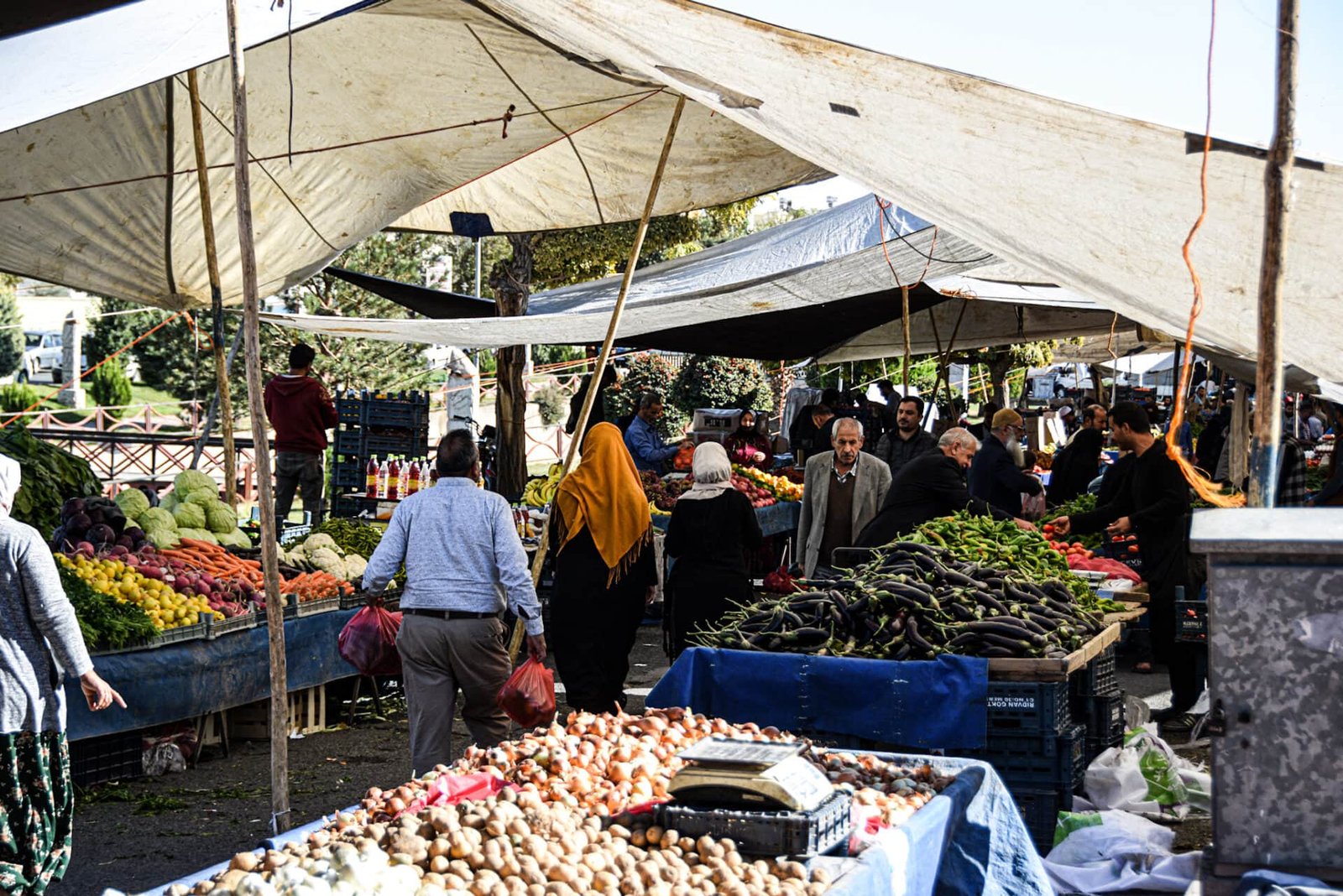
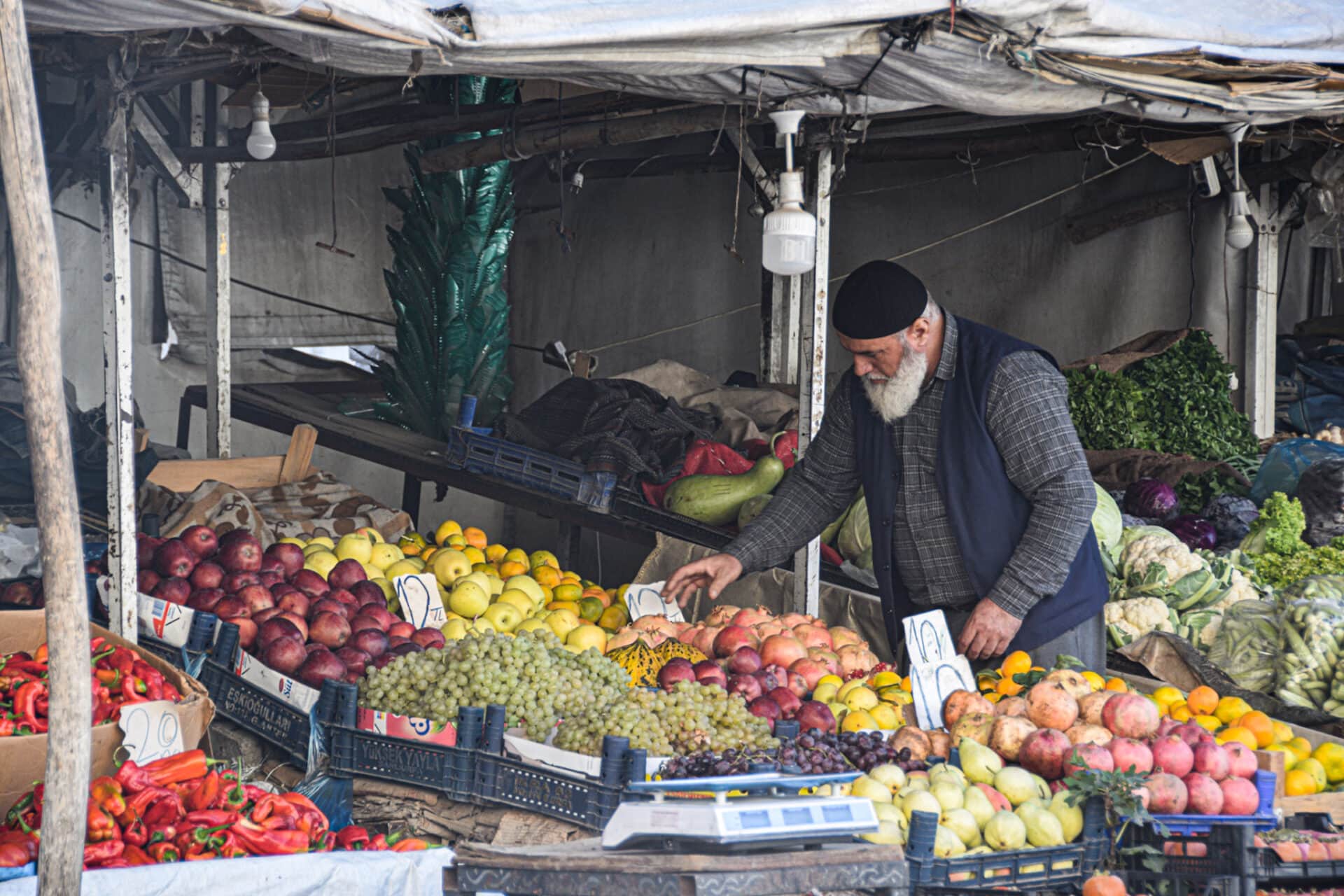
SIP ÇAY AT BÜYÜK MAĞARA CAFÉ
Tugged away into a darksome hollow right below the castle, Büyük Mağara Café is hands down one of the coolest cafés I have ever set foot in.
Unremarkable on the outside, behind the threshold awaits an absolute extraordinary interior. Reminiscent of an antique shop rather than a Turkish coffee house, the cave’s rugged walls are decorated with a wild melange of dated electronics, weathered portraits, everyday objects, dusty weapons, and pretty much anything that looks old enough to fit the bill.
As your gaze darts through the room hunting for oddities, the sweet çay in front of you becomes but an insignificant support actor and the clock is turned back to a time when horse carts, rattling down Urfa’s cobbled streets, were still in preponderance and the decline of the Lira a futuristic fairy tale.
Perhaps not the most scenic of cafés (it is inside a cave after all) but definitely the most unique spot to sip that sweet Turkish afternoon tea when visiting Şanlıurfa!
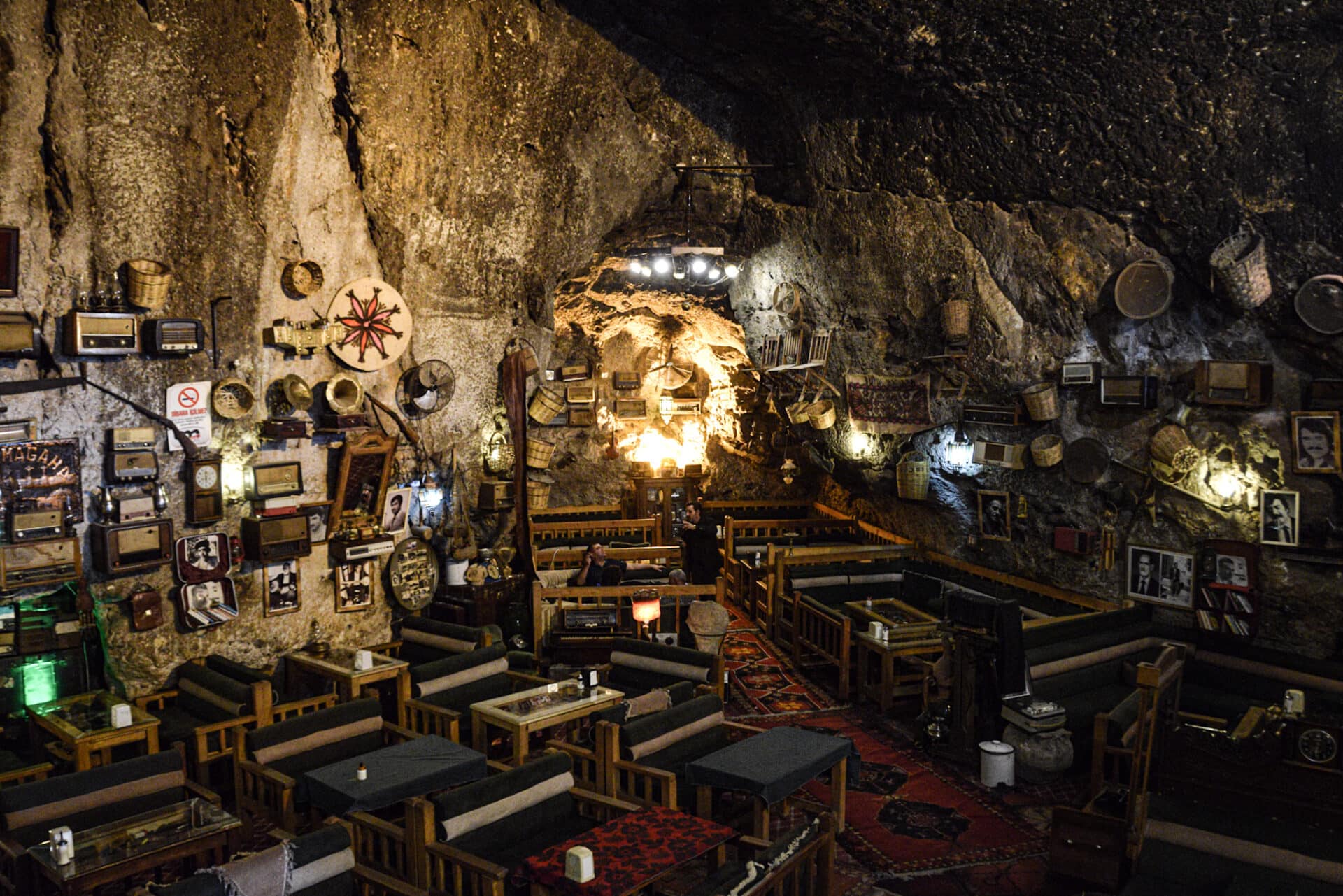
WHERE TO NEXT?
For more content consider following me on Instagram.
Mesmerised by the beauty of Anatolia? These wonderous places shoudn’t be missed either:
AMASYA | OF MAUSOLEUMS, MONARCHS, AND MUMMIES
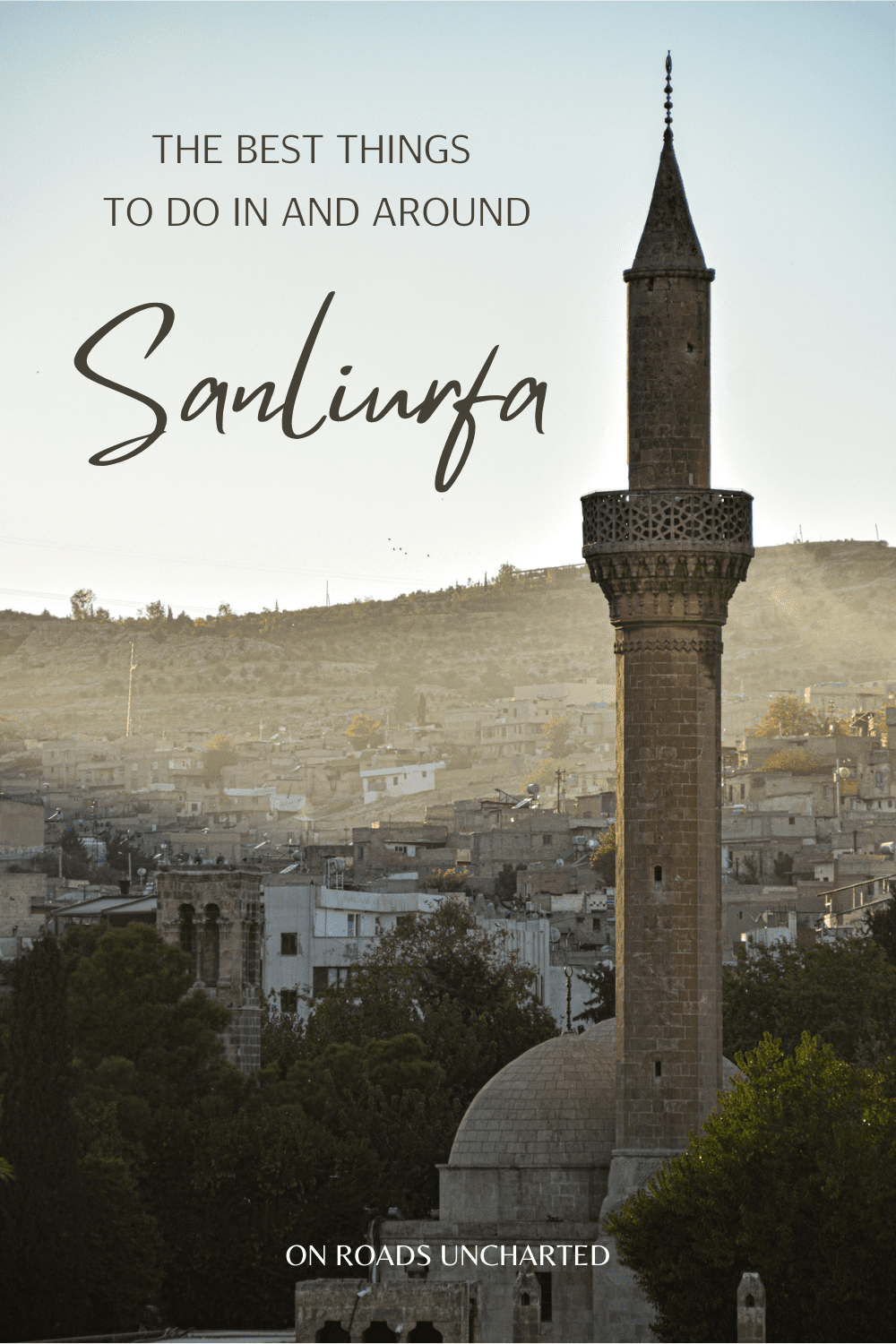
4 comments
Thanks a lot for those advices. I habe been to Urfa only 1 day and planning for may 2025 again. Can’t wait. That time I only saw the citadel and fish pond nut there is much more. Also need to go to Harran.
Hey Ines, sorry for the late reply! Thanks for your message. I’m glad you found the guide helpful. If you need some more info on Urfa let me know 🙂
I’m going to $anliurfa soon to visit Göbekli Tepe, thanks for inspiring me to stay there a bit longer! Your photos and descriptions are very helpful.
Hey Marla! Glad you found my advice helpful. I hope you have a wonderful time in Sanliurfa 🙂